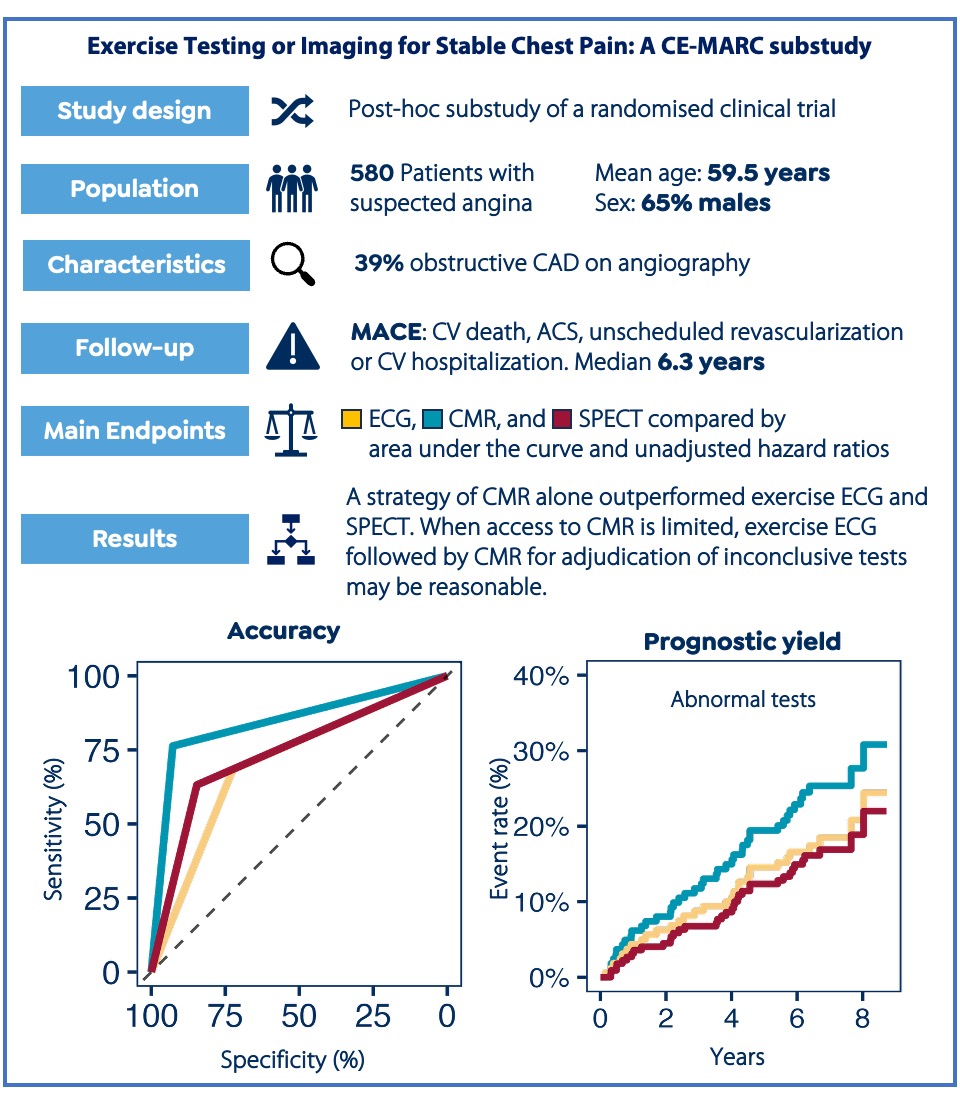Diagnostic and prognostic comparison of stress ECG, CMR and SPECT, alone and sequentially, in stable chest pain (2025). G. Bisaccia, P. P. Swoboda, J. F. Younger, N. Maredia, C. J. Dickinson, J. M. Brown, C. Bucciarelli-Ducci, S. Plein and J. P. Greenwood. Journal of Cardiovascular Magnetic Resonance.
Background
Exercise ECG remains widely performed in the assessment of patients with suspected cardiac chest pain. We aimed to assess the comparative diagnostic and prognostic yield of exercise ECG, single photon emission computed tomography (SPECT) and cardiovascular magnetic resonance (CMR), in a large prospective patient population.
Methods
Patients recruited to CE-MARC who had exercise ECG were included and followed up to a median(IQR) of 6.3(0.1,6.8) years. Sensitivity, specificity, positive (PPV) and negative (NPV) predictive values, and area under the curve (AUC) for diagnostic accuracy were derived and hazard ratios of MACE for prognostic significance calculated.
Results
Of 752 patients in the CE-MARC trial, 580 had exercise ECG and invasive coronary angiography, of which 503 also had SPECT and CMR. At follow-up, a total of 91(15.7%) patients experienced MACE. Using invasive angiography as the reference test, the sensitivity, specificity, PPV and NPV(95%CI) of exercise ECG were 68.3(61.9,74.0), 72.5(67.6,76.9), 61.0(54.8,66.8), 78.4(73.7,82.5). Exercise ECG was significantly less sensitive than CMR and less specific than both CMR and SPECT. A positive exercise ECG result was not predictive of MACE at follow-up (HR 1.14[0.75,1.72], p=0.53). CMR had both a greater diagnostic and prognostic yield than exercise ECG, SPECT and their combination. Sequential CMR following inconclusive exercise ECG was comparable to CMR alone as the first-line test.
Conclusions
In patients with suspected angina, CMR alone as the first-line test was more sensitive and prognostically accurate than exercise ECG, SPECT, or sequential combination of both tests.
